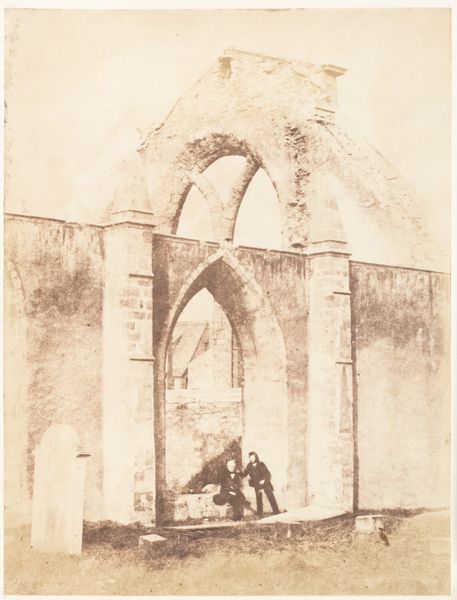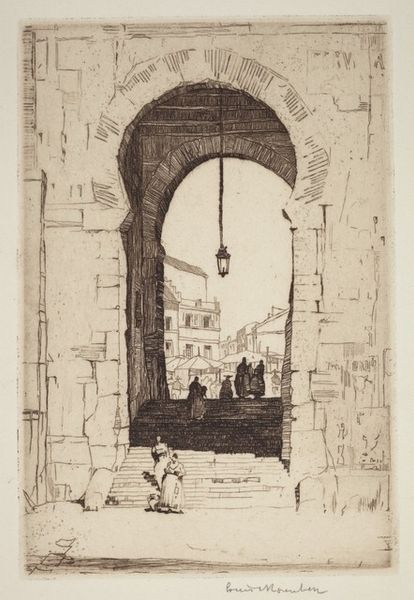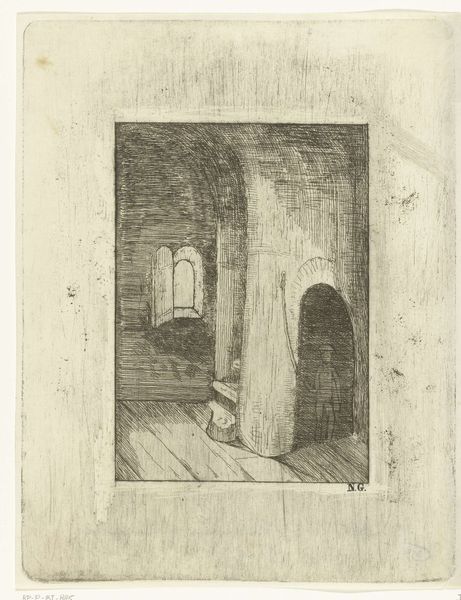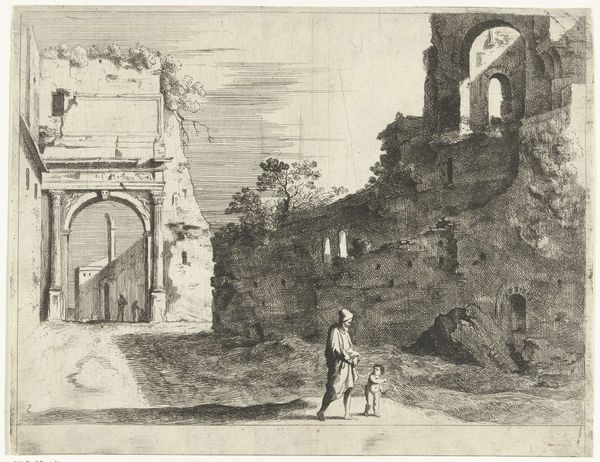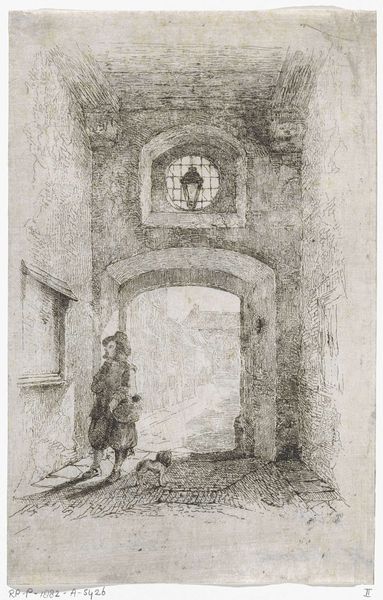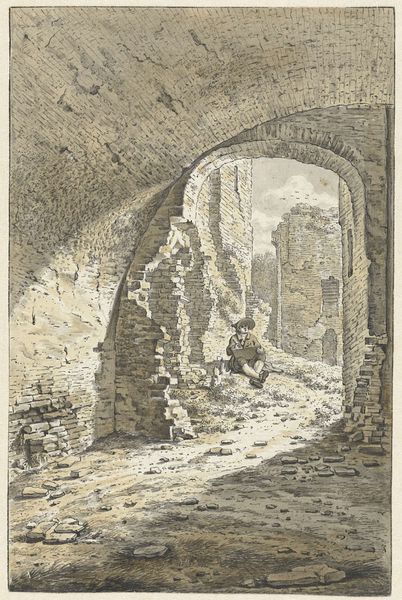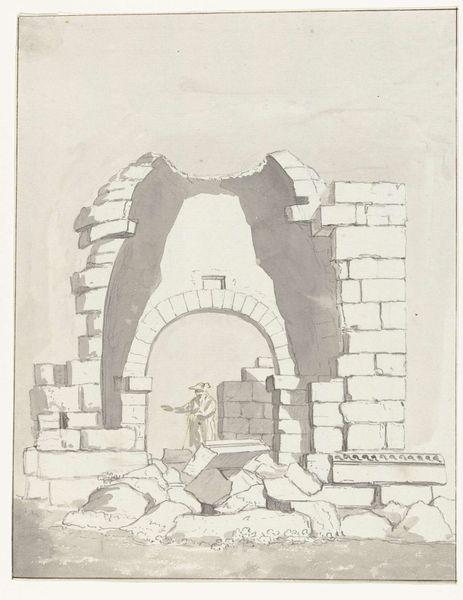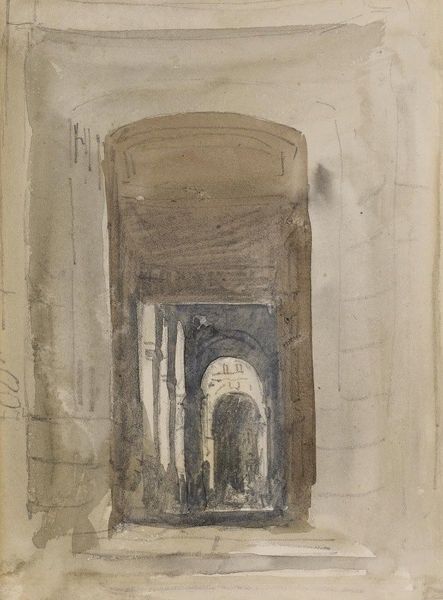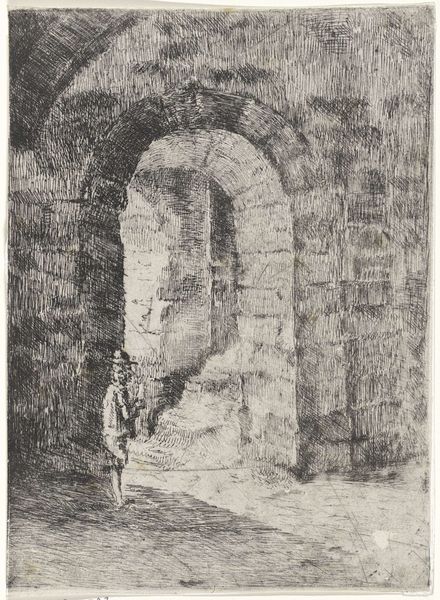
drawing, watercolor
#
drawing
#
water colours
#
baroque
#
landscape
#
watercolor
#
genre-painting
#
watercolor
Dimensions: height 185 mm, width 144 mm
Copyright: Rijks Museum: Open Domain
Curator: This watercolor drawing, titled "Schaapherder bij ruïne," or "Shepherd with Ruins," comes to us from Jan Smees and dates sometime between 1705 and 1729. Editor: Ah, a melancholic beauty! It looks like a memory, doesn't it? All these greys and browns bleeding together… very dreamlike. It whispers of bygone eras. Curator: The Baroque style is certainly at play here. It's more than just a landscape; Smees gives us genre painting infused with symbolism. Notice the monumental ruins towering over the small figures. These crumbling stones become metaphors for time, loss, the impermanence of human endeavor. Editor: Absolutely! That shepherd leading his flock feels… tiny. Almost swallowed by the past. The cool greys amplify the silence, don't they? Is it just me, or do you sense a touch of Romanticism peeking through here, way before its time? The romantic movement with a capital 'R'. Curator: It does hint at the sublime, that potent combination of awe and terror evoked by ruins. The ruins symbolize the past, but it is an aestheticized past that generates intense emotion. Sheep have always carried potent symbolic associations, too: vulnerability, sacrifice, even purity. Editor: Right! They look almost oblivious to the grand, ruined architecture surrounding them. Perhaps they signify innocence persisting amid decay. Or, more playfully, a complete indifference to our human obsession with history and significance? Just munching on, utterly content. Curator: Ha! Yes, their serene grazing is a sharp contrast to the solemn weight of those arches. I'd suggest Smees offers us not just a picturesque scene, but a commentary on human existence against the vast backdrop of history. Editor: So, is this Smees fellow saying it’s all a bit meaningless, or…? Perhaps there is peace to be found by ignoring monuments and connecting to something like nature. In either case, it makes one consider, doesn’t it? Thanks to these beautiful, muddy colors. Curator: Precisely. Whether a memento mori, or a simple call to live in the present, Smees gives us plenty to contemplate.
Comments
No comments
Be the first to comment and join the conversation on the ultimate creative platform.
